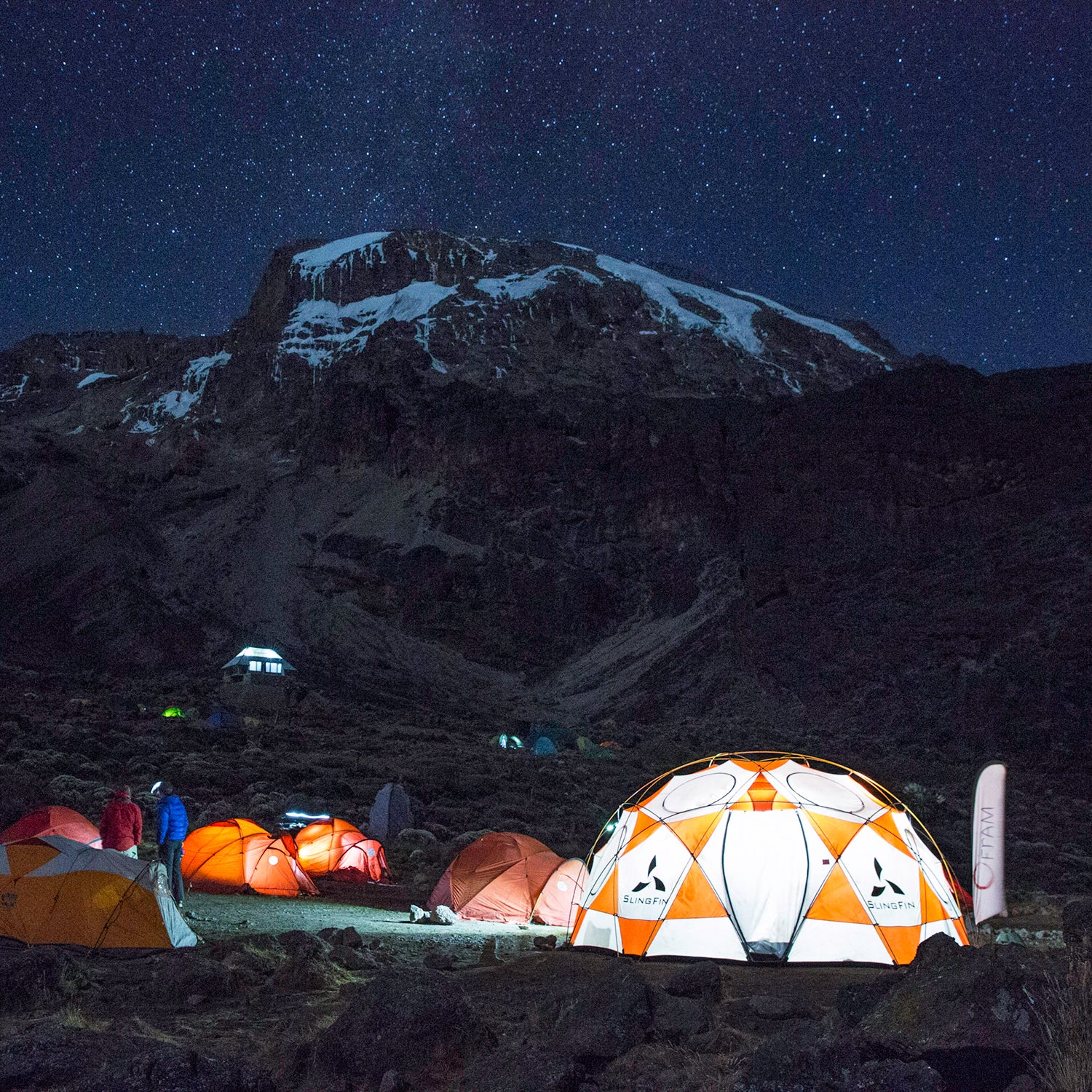How can two tents with identical height and footprint differ in volume by ten cubic feet—the difference between sprawling and spooning? The answer: basic geometry. And it’s the reason a growing chorus of tent makers thinks volume should join weight, peak height, and square footage in tent specs.
Volume wasn’t needed ten years ago when we shopped at actual stores and could sit in an actual tent. But few stores today dedicate space for setting up tents, and most people shop online. Stats sell tents, yet volume is never included, leaving buyers to base their decision on square footage, tent height, and, particularly, weight.
“I suspected it all along, but when I saw the numbers, it was eye opening,” says Martin Zemitis, a veteran tent designer at , a boutique expedition and backpacking tent maker. Zemitis took SlingFin’s 28-square-foot, 2-pound-14-ounce 2Lite tent and compared it to a similarly endowed, but nine ounces lighter, competitor.
Because physical tents are slightly different than their computer-generated design, Zemitis hand measured the internal volumes. The 2Lite measured 42 cubic feet. The competitor: 32 cubic feet. Add vestibules and the space gap widened to 34 cubic feet—the equivalent of a four-by-three-foot shed.
“That’s a big difference in room—for cooking, storing packs, and waiting out crappy weather—for the equivalent of a couple granola bars,” concluded Zemitis. “Companies have been effectively gaming the system, making tents that look good on paper, calling it a two-person tent, but aren’t actually livable.”
What we need is a combination of an easy-to-digest graphic, like Nemo’s tent topographic, and hard numbers like square footage or volume. It would comparably illustrate how roomy the tent really is and may even keep more people camping.
To level the market, Zemitis wants all manufacturers to publish tent volume and, more important, a livability index—a ratio of a tent’s weight to space. “It’s an easy way to compare apples to apples,” he says.
SlingFin isn’t the first company to raise this idea. Since at least 2010, a tent working group at discussed adding volume to tent specs. was the first to voluntarily adopt the new metric, calling it tent topographics, which measures the square footage of its tents at one-foot intervals from the floor to three feet up.
“The best way to know how much area you’ll have for sitting up is the square footage at the three-foot level, where your head is going to be,” says Cam Brensinger, founder and CEO of Nemo.
Brensinger dismisses a simple cubic-foot volume metric as ambiguous. “Imagine a tent that’s 27 inches tall and 20 feet long,” he says. “It’s got huge volume but is completely useless space.” Nemo shared its method with the ASTM working group, and and have both used it in their dealer marketing material. But only Nemo uses it on its hangtags, website, and catalogs.
“Its use is limited if we’re the only ones doing it,” Brensinger says. “But all companies are only going to adopt it if someone like REI demands it.” REI declined a request for an interview. While online retailer isn’t convinced a volume standard is necessary, the company has floated the idea of working alongside manufacturers to develop a standard of how many people fit in a tent, says Aaron Povine, director of hard goods for Backcountry.
That seems like a crude measure to me. As a tent tester for �����ԹϺ���, I’ve slept in dozens of backpacking tents. I think we need numbers we can compare, just like we do with weight. At the same time, I don’t think cubic feet and ratios mean much on their own. What we need is a combination of an easy-to-digest graphic, like Nemo’s tent topographic, and hard numbers like square footage at each elevation or volume. It would comparably illustrate how roomy the tent really is and may even keep more people camping.
“I wonder how many people tried backpacking for the first time in an ultralight tent,” says Brensinger, “but didn’t have fun because they were cramped and never did it again.”


